EMS News
Vol. 51 No. 4


Vol. 51 No. 4

The MIEMSS Office of Government Affairs (OGA) serves as the liaison for the executive and legislative branches of State government. Through the cultivation of collaborative partnerships with all relevant stakeholders, the OGA is dedicated to developing and advancing effective statutory and regulatory policies in support of all components of the statewide EMS system, the emergency care system, and Maryland’s healthcare system as a whole.

The 2025 legislative session of the Maryland General Assembly convened on January 8, 2025, and adjourned on April 7, 2025. During this time, the House and Senate considered hundreds of bills, including those with an impact upon Maryland EMS. Here are four such bills of interest that passed during the session: n HB 1131 – Public Health – Buprenorphine – Training Grant Program and Workgroup. This legislation (1) establishes a Buprenorphine Training Grant Program (Program) to assist EMS Operational Programs with offsetting the cost of training paramedics to administer buprenorphine, (2) includes this Program as an
authorized use of funding from the Opioid Restitution Fund, and (3) requires the Maryland Office of Opioid Response to convene a workgroup to study access to buprenorphine in the State.
HB 1131 includes a provision that requires the Governor to include in the annual budget bill an appropriation of at least $50,000 from the Opioid Restitution Fund for the Program. Based on projected training costs and the amount of this annual appropriation, the number of paramedics to be trained to induce buprenorphine therapy could be achieved in four years. This, of course, assumes there is interest among EMS Operational Programs in conducting and arrang-
ing the education and among paramedics in receiving it.
MIEMSS estimates that it would cost approximately $500 to train each paramedic, or $200,000.
n HB 246 / SB 205 – Human Services –Adult Protective Services. This legislation specifies that certain provisions of law relating to confidentiality do not prohibit the disclosure of certain information by state or local government employees or the United States if the officer or employee is responsible for conducting an adult protective services (APS) investigation. It also expands the definition of “health practitioner” for the purposes of mandatory APS reporting, to include cardiac rescue technicians, emergency medical technicians, and paramedics. Additionally, the bill adds calls to the statewide reporting hotline administered by the Department of Human Services as a reporting method. While the bill generally goes into effect on October 1, 2025, the mandatory reporting requirement for EMS clinicians will not go into effect until July 1, 2026, which will provide the neces-
April
n 29: Maryland Highway Safety Summit. Hilton Baltimore BWI Hotel, Linthicum Heights, MD.
n 30: Deadline: MIEMSS Region
I EMS Hall of Fame Nominations.
May
n 15–16: Point/Counterpoint XLII. Baltimore, MD.
n 18–24: National EMS Week.
n 27–30: Maryland Emergency Management Association Symposium 2025. Ocean City, MD.
June
n 1: Maryland Fire-Rescue Services Memorial Induction. Annapolis, MD.
n 14–19: 133rd Maryland State Firefighters Association Annual Convention and Conference Ocean City, MD.
n Carroll County Fire and EMS Help with Hospital ED Redesign to Improve EMS Wait Times (EMS1) The Carroll County Department of Fire and Emergency Medical Services played a key role in modernizing Carroll Hospital’s emergency department, aiming to improve EMS wait times and streamline patient handover. Officials kicked off the renovation and modernization project with a ceremonial groundbreaking at Carroll Hospital, a LifeBridge Health Center, on April 1. Read more: https://www. ems1.com/hospital/md-fire-department-helps-redesign-hospital-ed-forbetter-ems-wait-times
n Fort Meade EMS Hosts NAEMT Tactical Training for Local Clinicians (Defense Visual Information Distribution Service). Fort Meade Emergency Medical Services hosted the National Association of Emergency Medical Technicians (NAEMT) Tactical Emergency Casualty Care training March 20-21. The two-
day specialized training, which drew EMS personnel from Fort Meade and surrounding jurisdictions (including Anne Arundel, Howard, and Baltimore Counties), presented EMS clinicians with concepts, principles, and skills to deliver emergency medical care for patients in a civilian tactical environment. Read more: https:// www.dvidshub.net/news/493908/ fort-meade-ems-hosts-naemt-tactical-training-local-providers n Oldest Licensed Ambulance in the US Just Drove 3,233 Miles Cross-Country (The Drive). A team of doctors and EMTs recently drove a 1972 Miller-Meteor Cadillac – the oldest licensed ambulance operating in the country – from Hollywood, California, to Hollywood, Florida, to raise awareness for first responders and the importance of continued training. Read more: https://www.thedrive.com/news/the-oldest-licensedambulance-in-the-us-just-drove3233-miles-cross-country n
April 9, 2025
| James N. Robey Public Safety Training Center | Marriottsville, MD
The Office of the State EMS Medical Director, in partnership with the State Office of Commercial Ambulance Licensing and Regulation and the Maryland EMS for Children program, drew regional, jurisdictional, and commercial ambulance service medical directors, base station physicians and coordinators, jurisdictional and quality assurance officials, and various MIEMSS personnel for the 30th Annual EMS Medical Directors' Symposium, held April 9 in Marriottsville. The daylong invitational event featured educational programming and discussion on such topical matters as unified response, whole blood implementation, pediatric prehospital benchmarks, and more. n
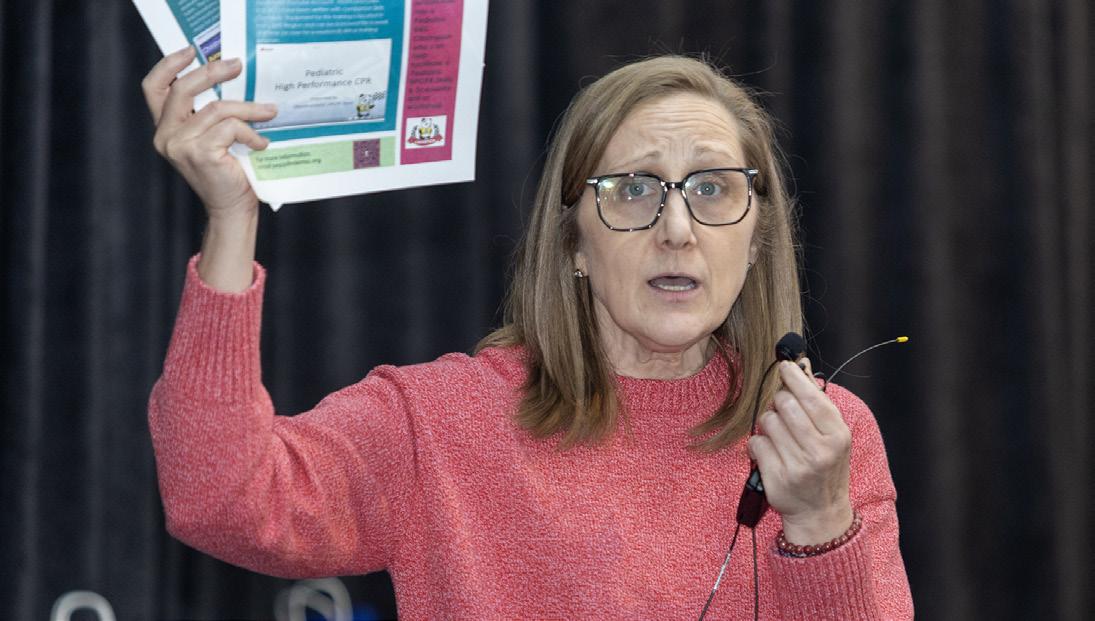






Every April, National Public Safety Telecommunicators Week honors the telecommunications professionals who so often serve as the first point of contact for those in need of emergency services.
Maryland’s statewide EMS system’s communications hub is composed of two integrated components –Systems Communications (SYSCOM) and the Emergency Medical Resource Center (EMRC). Both EMRC and SYSCOM function 24 hours a day, 365 days a year.
This year (April 13-19, 2025), MIEMSS salutes EMRC/SYSCOM and all emergency dispatch personnel across Maryland and around the nation for their critical role in saving

Sarah Byun has joined MIEMSS as an EMS Data Analyst in the office of Data Analysis and Information Management. Sarah brings to the role a background in medicine and project management from the University of Maryland Baltimore, and the Maryland Department of Public Safety and Corrections. Her hometown is in Howard County. n

lives and keeping our communities safe. Click the image above to watch a short video tribute to our public safety
telecommunicators, or view it online at https://www.youtube.com/embed/ GCsdn2M37FY n
The Maryland Chapter of the American College of Emergency Physicians (ACEP) presented its 2025 EMS Physician of the Year Award to Baltimore County EMS Medical Director Jeffrey D. Nussbaum, MD, MBA, FACEP, (pictured below, at left, with Executive Board President Dr. Michael C. Bond) during its Educational Conference & Annual Meeting on March 27. The Maryland Chapter likewise honored Maryland EMS for Children program director Cyndy WrightJohnson, MSN, RN, as ENA Nurse of the Year. Visit https://www.mdacep. org/2024-award-recipients-2/ for the complete list of 2025 award recipients. n
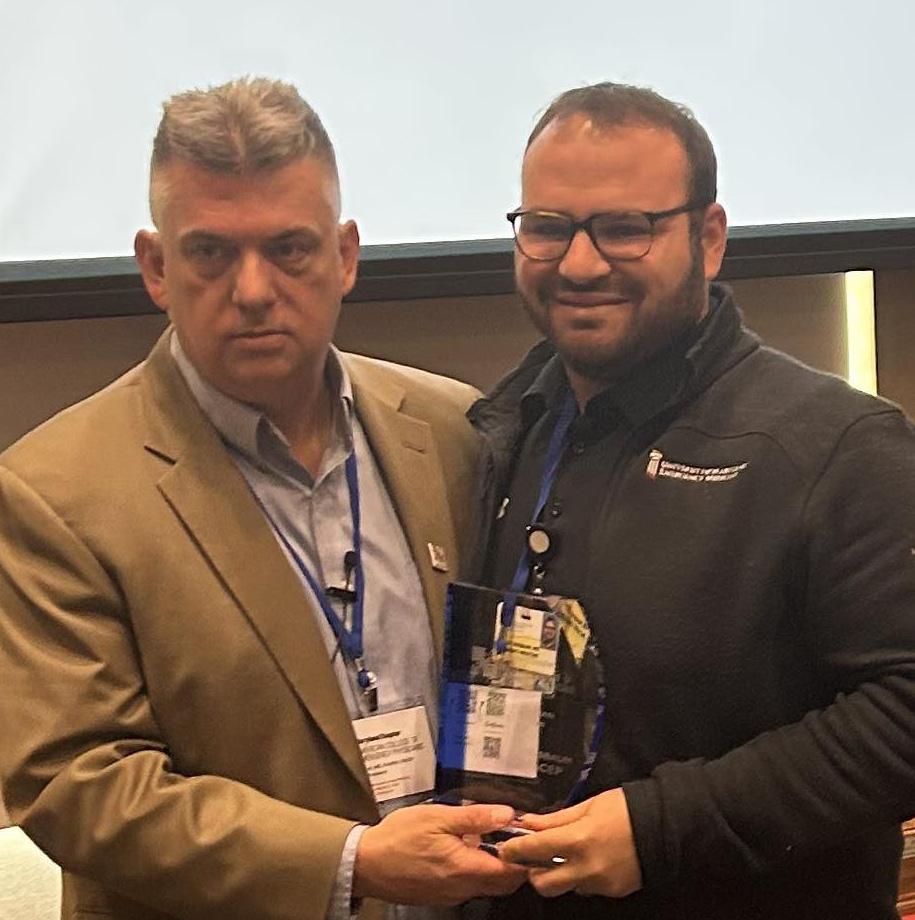
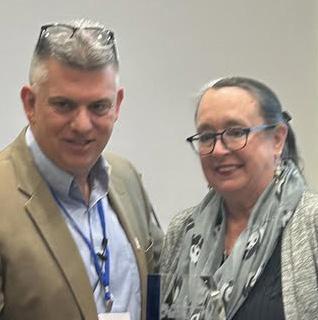
Effective April 1, 2025, the Maryland Poison Center (MPC), a key service of the University of Maryland School of Pharmacy (UMSOP), extended its coverage to encompass all 23 Maryland counties, Baltimore City, and the District of Columbia. Previously, Prince George’s and Montgomery counties, along with the District of Columbia, were serviced by the National Capital Poison Center. This expansion, led by the Maryland Department of Health and DC Health, represents a significant milestone in the delivery of comprehensive poison control services.
“Maryland emergency medical service clinicians in EMS, EDs, and primary care across Maryland have relied on the Maryland Poison Center
for just-in-time, evidence-based clinical guidance when a poison exposure has occurred,” said Cyndy WrightJohnson, MSN, director of the EMS for Children program at MIEMSS.
“Having immediate access to experienced health care professionals in poisoning situations is a crucial part of providing the best care to our communities. The expansion to include Montgomery and Prince George’s counties in the population of citizens, visitors, and clinicians served by the same Maryland Poison Center will enhance the support in emergencies and increase the distribution of poison prevention educational materials.”
“The Maryland Department of Health is proud to support UMSOP’s expansion of Maryland Poison Cen-
ter services to every jurisdiction in our state,” said Nilesh Kalyanaraman, MD, deputy secretary for public health services at the Maryland Department of Health. “This expanded coverage will give Marylanders closer proximity to poison control education and event reporting and help eliminate gaps in state, local, and regional incident response preparedness.”
DC Health Director Ayanna Bennett, MD, MSPH, FAAP, emphasized the importance of accessible emergency resources. “This expansion marks a vital step in strengthening regional public health services, improving response times, and enhancing collaboration across jurisdictions,” said Ben-
See Poison page 10
On March 19, 1970, Maryland State Police (MSP) completed its first medevac mission. Driven by Dr. R Adams Cowley’s pioneering work in the field of trauma medicine, Governor Marvin Mandel established the Maryland EMS system – the first statewide organized EMS system in the nation – by Executive Order three years later.
“Congratulations to the Maryland State Police Aviation Command, and all who have made contributions and sacrifices over the past 55 years to provide preeminent air-medical services to the people of
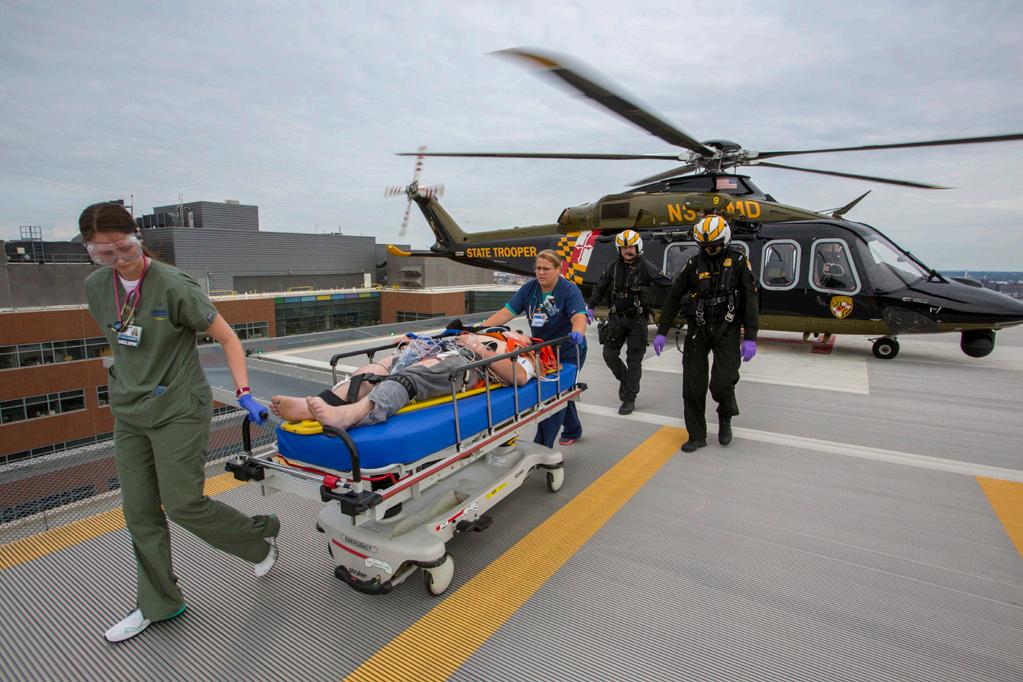
Maryland,” said State EMS Board Chair Clay B. Stamp.
MIEMSS Executive Director Dr. Ted Delbridge called the agency's partnership with MSP Aviation Com-
mand “invaluable.”
“As we acknowledge the 55th anniversary of the first medevac mission by the Maryland State Police, we are reminded of the crucial role the MSP Aviation Command plays to deliver state-of-the-art emergency medical services throughout our state,” said Dr. Delbridge.
MIEMSS is proud to partner with MSPAC in serving the state’s most critically injured patients in their hour of greatest need. Learn more about Maryland medevac history at https://tinyurl.com/MarylandMedevacHistory n
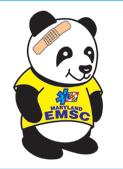
Pediatric vehicular heatstroke is the leading cause of non-crash, vehicle-related deaths for children 14 and younger. Since 1998, when safety advocates began tracking such data, hot-car deaths have killed more than 1,000 children. In the U.S., 39 children died due to vehicular heatstroke
in 2024 – tragically, each death was preventable.
The three main scenarios in which heatstroke occurs are:
n Children are forgotten in vehicles by caregivers.
n Children gain access to unlocked vehicles and become trapped inside.
In 2024, 39 children died from heatstroke when left alone in a vehicle. Awareness and behavior modification among caregivers are key to preventing the majority of these tragic deaths. The Outdoor Stand-Up Temperature Display is an excellent tool to create awareness of how a vehicle can quickly heat up in the sun to where the inside temperatures would kill a child. This display features:
• A tall metal (78”) or tripod free-standing display with two LCD temperature monitors attached at the top: one for the in-vehicle temperature and one for outside/ambient temperature
• Cable connectors with thermometers to place in and outside the car
• 100 foot extension cord.
• Instructional videos on setting it up: www.youtubecom/watch?v=CBFh3M4Kp74 ; tripod version: https://youtu.be/zGPB8fYatDU
• Handouts and posters for the public
Kits are free to borrow, with pick up locations across Maryland.
To reserve a kit for your Open House or event, use this QR code:



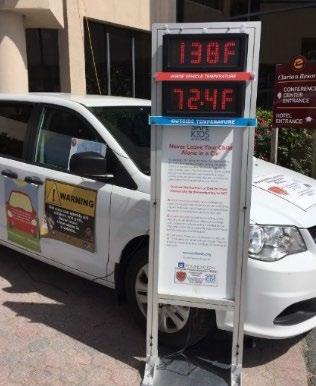
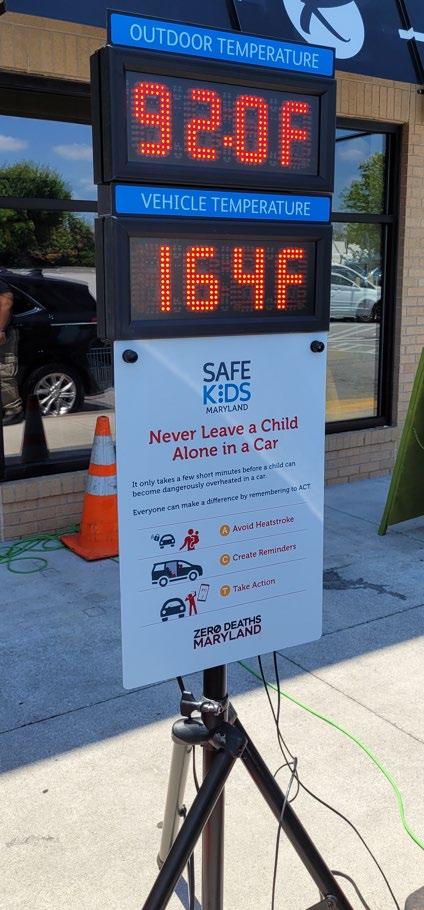

n Children are knowingly left in vehicles by caregivers.
The biggest risk factor in the majority of cases of forgotten children is a change in routine. Before leaving a vehicle, stop, look for a child, and lock the car doors. It only takes a second. It is also critical that all parents, caregivers, and drivers understand that children should never be left alone in a vehicle, not even for a minute.
As a reminder that you have a child in the back seat, keep an item in the back, like a toy. Then, put the toy up front with you when your child is in the car seat to serve as a reminder. Or, put your purse or work bag in the back seat with the child.
If you see a child in distress in a vehicle, act quickly and call 9-1-1 to summon help.
May 1 is National Heatstroke Awareness Day, when many injury prevention organizations and federal agencies alert the public to the risk of heatstroke to children alone in a vehicle. Consider borrowing one of the free outdoor temperature displays for your community event (see box at left) or procuring free posters and handouts from MIEMSS (email cps@miemss.org). For more information on pediatric vehicular heatstroke, visit www.trafficsafetymarketing. gov/safety-topics/child-safety/vehicular-heatstroke-prevention or watch this YouTube video on “Maryland EMS”: https://www.youtube.com/ watch?v=yCdI69S2zvw&t=10s. n
The Emergency Medical Services for Children (EMSC) Program at MIEMSS addresses the unique needs of children within the EMS system, providing a focal point for statewide resources and networking on emergency care for children and their families. Learn more at https://miemss.org/home/emsc, or scan or click on the QR code at right.


Maryland's EMS system is comprised of 29 EMS operational programs divided into five regions. This month, we will highlight some members of Maryland’s Pediatric EMS Champion Team from across the State.

Molly Holland, NRP, is the Pediatric EMS Champion for Annapolis City. She serves as a Firefighter/Paramedic for the Annapolis Fire Department. Molly is also a nurse who holds her BSN, and is presently working toward her FNP. Molly has always felt the call to care for others, having grown up in close proximity to the medical field thanks to her parents. As such, EMS felt like a natural path. She is deeply committed to ensuring the best possible care for every individual she connects with, regardless of their status, age, or ability to communicate or self-advocate. Molly was drawn to working with Maryland EMSC for the opportunities it provides for amplifying and advocating for the needs of our youngest patients.
Molly takes particular interest in neurodiversity, special populations, and emergency nursing. She is a proud advocate for autism acceptance and inclusion, as well as an educator of EMS response within the neurodivergent population.
Excercise offers Molly her greatest stress-relief. She loves lifting weights, running, hiking, or any outside activity. Her superpower of choice would be the ability to teleport, as it would enable her to travel anywhere without changing her schedule or having to sit in traffic.

Chrystie Dillon, NRP, CPST, is one of the Pediatric EMS Champions for Harford County. A Paramedic for Harford County Department of Emergency Services, Chrystie was drawn to EMS and EMSC because she loves making a difference. She especially enjoys educating and helping others, as well as the unexpected nature of EMS. In addition, Chrystie is a certified child passenger safety technician and an advocate for children with special needs and autism.
As a child, Chrystie’s favorite subject in school was art. She loved to play with Barbies and watch the TLC television series True Life in the ER. Her first job was working as a blood donation coordinator for the American Red Cross.
Outside of work, Chrystie loves spending time with her children and serving as PTA President at their school. She enjoys cooking for all of the holidays. Her favorite Christmas tradition is driving around looking at all of the lights and decorations. The best piece of advice she ever received was, “Trust your intuition.”

Elizabeth (Beth) Piatelli, EMT, is one of the Pediatric EMS Champions for Harford County. An EMT with Harford County Department of Emergency Services, Beth also serves as EMS Chief for the Rising Sun Fire Company. Her favorite aspect of working in EMS is having the ability to make a difference in someone’s life, and she loves being a part of assisting her community.
During high school, Beth studied early childhood and development while also working at a child care center. In addition to her EMS career, Beth has worked in the emergency departments of Nemours Children’s Hospital and Upper Chesapeake Harford Memorial. Growing up, she enjoyed spending time with her grandmother, parents, and roller skating.
If Beth came with a warning lable, it would read, “My face says what I am thinking.” The best advice she ever received was to “take it one minute at a time.” Outside of work, Beth enjoys spending time with her son (especially on his Boy Scouting adventures), her husband, and friends, as well as family vacations and trips to the casino. n
Maryland Department of Transportation Motor Vehicle Administration’s (MDOT MVA)
The MDOT MVA Highway Safety Office (MHSO) is dedicated to saving lives and working with many partners across the State to reduce the number of crashes each year. In addition, the MHSO looks for ways to reduce crash severity and ways to treat crash victims easier and faster.
Maryland aims to reduce the number of crashes, and the resulting deaths and injuries, to zero by 2030.
For many Marylanders, traveling on our roads is a daily or near-daily occurrence. Our roads get you to work, to family, to sports, to hobbies, and back home again. The ability to travel safely—for roads to be well maintained and free of litter, debris, and disabled vehicles—is one that much of the public takes for granted. This diligent work is carried out by thousands of people in numerous careers whose offices ARE our streets, roads, and highways.

Road workers, law enforcement, firefighters, emergency services, tow truck drivers, disabled motorists—they all depend on us to keep them safe. Whether it’s road construction, litter collection, a traffic crash, or a tire change, these situations all create an active work zone. All drivers must be on alert for reductions in speed and the need for potential lane changes
April 21-25 is National Work Zone Safety Awareness Week. We ask you to join us as we work to raise awareness for work zone safety so that we can ensure that everyone working and driving on our roads each day makes it home.
When we think of impaired driving, alcohol is usually the substance that immediately comes to mind, but alcohol is far from the only thing that could cause you to be impaired behind the wheel.
Alcohol, cannabis, prescription medications, and even drowsy driving can impair your ability to drive a vehicle safely. Those effects only increase when more than one of those factors is involved.
While we all know it is illegal to drive under the influence of alcohol or cannabis, impairment by prescription or over-the-counter medications or drowsiness can be just as dangerous as your reaction and judgment are similarly compromised.
Impaired driving — in any form — is deadly.
If you are concerned you might be impaired, don’t risk driving. It’s not worth the risk to your life or the lives of others on the road. Thankfully, you have options:
• Use Public Transportation
• Call a Rideshare or Taxi Service
• Call a Friend or Family Member
If you’re on a lengthy drive and find yourself in a position where you’re too tired to continue, it’s okay to stop and rest until you’re once again able to drive safely.
Remember, together we can all get there safely!

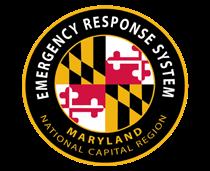
Maryland-National
On February 5, 2025, the MarylandNational Capital Region Emergency Response System (MDERS) hosted a tabletop exercise (TTX) focused on interjurisdictional public order response. This three-hour exercise brought together participants from the Maryland State Police (MSP), Montgomery County Police Department (MCPD), Montgomery County Sheriff’s Office (MCSO) and Prince George’s County Police Department (PGPD) to evaluate their preparedness levels for managing large-scale demonstrations. The primary objectives of the exercise were to assess interagency collaboration and decision-making during planned and unplanned public order events. Participants analyzed resource deployment, communication strategies, and tactical decision-making, identifying strengths and areas for improvement. Key discussions focused on crowd management strategies, identifying appropriate moments for intervention, and planning for potential escalations.
Public order events can range from planned demonstrations and large gatherings to spontaneous incidents that escalate quickly. These events also require public officials to balance demonstrators' First Amendment rights and intervening, when necessary, to ensure public safety. Law enforcement agencies need extensive coordination, training, and manpower, both internally and externally, to manage these events.
To evaluate the current personnel, training, communication, tactics, and equipment for each stakeholder agen-
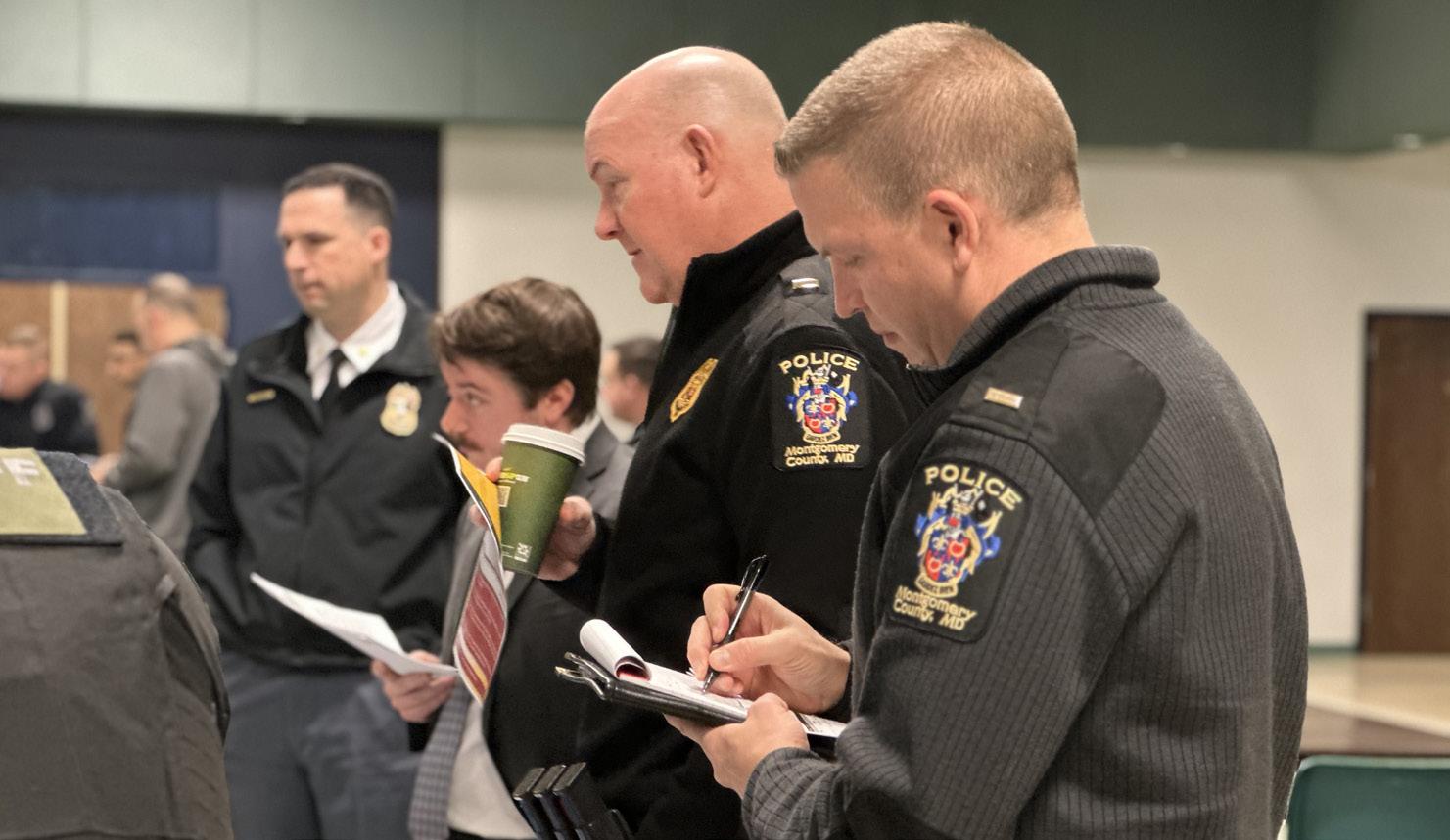
[Photo: MDERS]
cy, MDERS collaborated with MSP, MCPD, MCSO, and PGPD to assess an interjurisdictional response in each Montgomery and Prince George's County. MDERS formed a workgroup with representatives from these law enforcement agencies, and over a twomonth planning period developed two distinct scenarios:
1. A pre-planned demonstration, where law enforcement had prior knowledge and time to coordinate resources. This scenario was set in Montgomery County, with MCPD leading the planning phase and PGPD providing valuable input.
2. An impromptu gathering that rapidly escalated, requiring immediate response and decisionmaking. This scenario was set in Prince George’s County, with PGPD providing immediate response and requesting assistance from MCPD.
In an innovative twist, MDERS introduced maneuverable demonstrator pieces to mimic the dynamic crowd movements during these events. The incorporation of crowd movements, in conjunction with vehicle manipulatives, across a large map replicated a more realistic scenario for exercise participants to strategize and manage the incident.
After the exercise, MDERS distributed a short feedback survey, allowing participants to highlight strengths and identify areas for improvement in exercise facilitation. Additionally, participants provided feedback on the training and discussed potential future training opportunities. Based on the feedback received and the actions evaluated, MDERS will create an after-action report to assess the overall effectiveness of the
See MDERS page 10
(Continued from page 5)
nett. “We look forward to working alongside the Maryland Poison Center to continue protecting and educating our communities.”
Since 1972, MPC has served as an essential resource, providing 24/7 expert guidance to Marylanders through the help-line, 1-800-222-1222. Callers receive immediate assistance from experienced health care professionals – including pharmacists, nurses, and medical experts with a combined 250 years of experience at the Maryland Poison Center – helping to address poisoning emergencies and provide critical information on treatment and prevention.
With this expansion, MPC will not only increase its geographic coverage but also will streamline data collection and health care communication across the region. The reorganization of services will ensure that health care providers can access up-to-date, reliable information, fostering new opportunities for collaboration and response to poisoning incidents.
“We are thrilled to bring the tal-
Legislation...
(Continued from page 1)
sary time for MIEMSS to revise its clinical protocols to ensure the alignment of the relevant statute and associated regulations.
n HB 1380 / SB 676. This legislation requires the Maryland Department of Health, in coordination with MIEMSS, to adopt regulations establishing minimum perinatal care standards for hospitals that meet or exceed the Maryland Perinatal Sys-
this expansion, MPC will not only increase its geographic coverage but also will streamline data collection and health care communication across the region.
ents of our extremely dedicated staff to Prince George’s and Montgomery counties and the District of Columbia,” said Angel Bivens, BS Pharm, MBA, CSPI, managing director of MPC. “Whether it’s our pharmacists and nurses providing expert and compassionate care to callers or our public educator creating programs and materials to provide awareness and poison safety tips, our new communities are in good hands.”
In addition to the 1-800 helpline, MPC has deployed a digital companion tool, PoisonHelp.org, to provide individuals with valuable information on poisons, symptoms, and
treatments. This user-friendly online resource complements the center’s phone services, allowing the public to quickly access trustworthy information on the internet at any time.
MPC encourages anyone with a poison emergency to call 1-800222-1222, available 24/7 and free of charge. In addition, residents are invited to explore PoisonHelp.org for immediate, reliable information on poison-related issues. n
(Continued from page 9)
exercise and inform future planning. The success of this exercise underscores MDERS’s commitment to proactive preparedness and regional coordination. By training together in a structured, discussion-based environment, law enforcement agencies can refine their response strategies and enhance their ability to manage real-world public order incidents effectively. n
tem Standards for each hospital that provides obstetrical services, as well as for freestanding birthing centers. This legislation requires compliance with these standards as a condition of licensure.
n SB 369 / HB 593. This legislation requires each branch of a county library system or the Enoch Pratt Free Library to place an automated external defibrillator (AED) in a prominent area, accessible to employees and library users, and comply with the requirements of
the Maryland Public Access AED Program. By December 1, 2026, MIEMSS must report to the Senate Committee on Education, Energy, and the Environment and the House Ways and Means Committee on the libraries that registered AEDs in accordance with regulations adopted under §23-102.2 of the Education Article.
With the exception of HB 246 / SB 205 (which was signed into law on April 8), the aforementioned bills now await the Governor’s approval. n
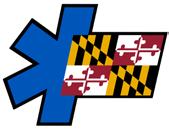
The EMS Board is authorized to take disciplinary action against clinicians who engage in prohibited conduct to safeguard the integrity of the EMS system. COMAR 30.02.04.01 lists conduct which is prohibited. Below is a sample of actions the EMS Board has taken from January to March, 2025, as a result of prohibited conduct. For more information, contact Lisa Chervon, Chief of the MIEMSS Office of Integrity, at lchervon@miemss.org or (410) 706-2339. Additionally, MIEMSS maintains a searchable database of all EMS Board decisions at https://www. miemss.org/home/public, which can be found under Public Orders Report in the left-hand column.
n IRC24-032 (CRT) February 14, 2025. The CRT failed to complete ten (10) electronic patient care reports in a timely manner as required by COMAR, over a period of approximately two (2) months. As a result, the CRT’s license was placed on probation for two (2) years from the date of the final decision, with the condition that there be no missing reports during that time and a warning that additional missing reports during the probationary period would result in suspension or revocation of the CRT’s license.
n IRC24-054 (EMT) February 14, 2025. In April 2023, the EMT pled guilty to the crime of driving a vehicle while impaired by alcohol, in the District Court for Calvert County, and was issued unsupervised probation before judgment for a period of one (1) year. In December 2023, the EMT submitted an application for BLS certification renewal to MIEMSS, and failed to disclose the aforementioned disposition. As a result, the EMT was reprimanded
for a failure to disclose the incident, and the EMT’s certification was placed on probation for one (1) year.
n IRC24-056 (EMT) February 14, 2025. In August 2024, random urinalysis testing collected while on duty produced results positive for cocaine metabolites, and the EMT was suspended from the Baltimore City Fire Department, without pay. As a result, the EMT’s certification was placed on probation for two (2) years, with the condition that the EMT comply with the requirements of the Baltimore City Fire Department’s aftercare program.
n IRC24-069 (EMT) February 24, 2025. In January 2024, the EMT pled guilty to the crime of driving a vehicle while under the influence of alcohol per se in the Circuit Court for Queen Anne’s County. The EMT was found guilty and sentenced to one (1) year in jail with all suspended, and issued unsupervised probation for a period of eighteen (18) months. As a result, the EMT’s certification was placed on probation for one (1) year.
n IRC24-058 (EMT) February 14, 2025. In September 2024, the EMT pled not guilty with agreed statement of facts to the crime of driving a vehicle while impaired by alcohol in the District Court for Baltimore County and was issued eighteen (18) months of supervised probation before judgment. As a result, the EMT’s certification was placed on probation for one (1) year.
n IRC24-059 (EMT) February 14, 2025. In July 2023, the EMT pled guilty to the crime of driving a vehicle while under the influence of alcohol per se and was issued three (3) years of unsupervised probation before judgment. In April 2024, the EMT submit-
ted an application for BLS reinstatement to MIEMSS and failed to disclose the aforementioned disposition. As a result, the EMT’s certification was placed on probation for one (1) year, and the EMT was reprimanded for a failure to disclose the incident.
n IRC24-062 (EMT) February 24, 2025. In January 2024, the EMT pled guilty to the crime of passing a bad check $1,500 – <$25,000 and was issued one (1) year of supervised probation before judgment and ordered to pay restitution in the amount of $2,170. In March 2024, upon submitting an application for initial EMT certification to MIEMSS, the EMT failed to disclose the aforementioned disposition. As a result, the EMT’s certification was placed on probation for a period of three (3) years.
n IRC24-065 (Applicant) February 24, 2025. In January 2024, the Applicant pled guilty to the crime of seconddegree assault and was issued unsupervised probation before judgment for a period of three (3) years. In September 2023, the Applicant pled guilty to a violation of probation, and was sentenced to ten (10) years in jail, with all but six (6) months suspended. As a result, the Applicant’s application for initial certification as an EMT was approved, and the Applicant’s certification was placed on probation for two (2) years from the date of initial certification.
n IRC24-071 (EMT) February 24, 2025. In March 2022, the EMT pled guilty to the crime of driving a vehicle while under the influence of alcohol per se in the Circuit Court for Frederick County and was issued unsupervised
See Compliance page 12
Compliance...
(Continued from page 11)
probation before judgment for a period of two (2) years. In November 2023, the EMT submitted an application for BLS certification renewal to MIEMSS, and failed to disclose the disposition. As a result, the EMT’s certification was placed on probation for one (1) year, and the EMT was reprimanded for a failure to disclose the incident.
n IRC24-064 (CRT) February 14, 2025. In August 2024, the CRT pled guilty in the District Court for Baltimore City to the crime of driving a vehicle while under the influence of alcohol per se while transporting a minor. The CRT was issued supervised probation before judgment for eighteen (18) months. At the time of the 2024 plea and sentencing, the CRT’s license was on probation with the EMS Board as a result of a previous disposition agreement. The EMS
Maryland EMS News
MIEMSS
653 W. Pratt St. Baltimore, MD 21201-1536
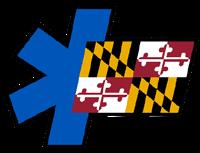
Governor Wes Moore
Lt. Governor Aruna Miller
Copyright © 2025 by the Maryland Institute for Emergency Medical Services Systems
653 W. Pratt St. Baltimore, MD 21201-1536 www.miemss.org
Chairman, EMS Board: Clay B. Stamp, NRP
Executive Director, MIEMSS: Theodore R. Delbridge, MD, MPH
Managing Editor: Patrick Tandy (ptandy@miemss.org)
Design & Layout: Patrick Tandy
Photography: MIEMSS Media Services
(unless noted otherwise)
Board issued a noncompliance notice proposing to suspend the CRT’s license for three (3) months, after which the CRT’s license would be placed on probation until April 30, 2029. The CRT requested a hearing and consequently, by way of another disposition agreement, it was agreed that the CRT’s license be suspended for fourteen (14) days, followed by probation until April 30, 2027. For the entire term of their probationary period, the CRT is required to report any new criminal charges to MIEMSS within 30 days of their issuance.
n IRC24-003 (EMT) March 11, 2025. In November 2023, the EMT tested positive for alcohol on a for-cause test that was ordered when the EMT was witnessed consuming alcohol while on duty. As a result, the EMT’s certification was placed on probation for two (2) years, with the condition that he undergo random drug and alcohol testing, with results reported to MIEMSS.
n IRC24-044 (EMT) March 11, 2025. In July 2024, follow-up breathalyzer testing performed while on duty produced results positive for alcohol. The EMT was suspended from the Baltimore City Fire Department for a violation of an after-care contract. As a result, the EMT’s certification was placed on probation for two (2) years, with the condition that he comply with any requirements of a Baltimore City Fire Department after-care contract, or in the absence of an after-care contract, submit to random drug and alcohol testing at his own expense, with results reported to MIEMSS.
n B-2020-949 (EMT) March 11, 2025. In October 2024, the Applicant submitted an application for BLS reinstatement to MIEMSS. In November 2019, the EMT received probation after conviction for the crime of carrying/wearing a handgun on person and was sentenced in the Circuit Court of
Baltimore City to three (3) years incarceration, of which two (2) years and six (6) months were suspended, and ordered to serve three (3) years’ supervised probation. The EMT’s previous certification expired on June 30, 2022. As a result of the November 2019 conviction, the Applicant's application was approved and their EMT certification was placed on probation for five (5) years, with the condition that the Applicant must report any new criminal charges and convictions to MIEMSS within thirty (30) days of their occurrence.
n IRC24-076 (Paramedic) March 12, 2025. The EMS Board issued a noncompliance notice to the Paramedic on February 13, 2025, in which the EMS Board alleged that the Paramedic pled guilty to five (5) counts of distribution of intimate sex images and electronic communications harassment and was sentenced to five (5) years’ incarceration, with all but 181 days suspended and five (5) years of probation. As a result, the EMS Board proposed that the Paramedic’s license be revoked. The Paramedic requested a hearing and entered into a disposition agreement, pursuant to which the Paramedic agreed to surrender their Maryland Paramedic’s license to the EMS Board.
n IRC24-012 (Paramedic) March 11, 2025. On April 19, 2024, the EMS Board issued a non-compliance notice to the Paramedic alleging that the Paramedic failed to comply with protocols or standards of care and filed a false report in the provision of EMS. The Paramedic requested a hearing. Following a hearing and the issuance of a proposed decision by an administrative law judge, the Paramedic filed exceptions with the EMS Board. Following an exceptions hearing before the full EMS Board, the Board issued a final decision revoking the Paramedic’s license. n